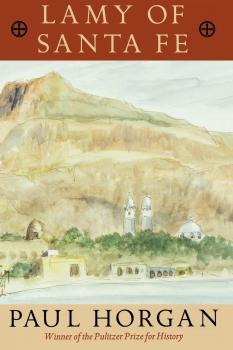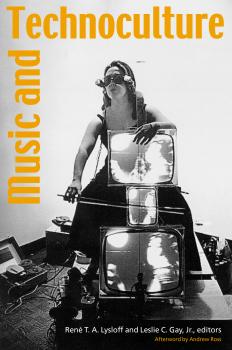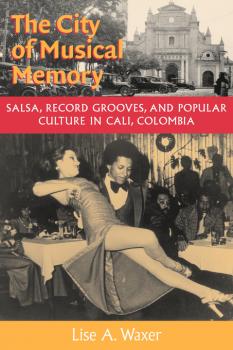ТОП просматриваемых книг сайта:
Ingram
Все книги издательства IngramАннотация
<P>Offering both subtle and immediate pleasures, Lee Ann Brown's generous new book extends her unmistakable, original voice, every bit as Southern as it is avant-garde, gracious without being naive. Abounding in a playfulness of style, including songs and ballads, the poems in The Sleep That Changed Everything are by turns funny, serious, insightful and moving. Botanical and scientific language are used here as collage elements to chart cycles of desire and emotional transformation. Brown is committed to Whitman's idea that we all have many selves; thus her work embraces the immediacy of the New York School, the personal and literary wildness of the Beats, the word play and political astuteness of Language poetry and an eroticism all her own. In poems that are both highly literate and plain-spoken, Brown makes the life of the soul directly available in all its renegade garb.</P>
Аннотация
<P><B>Winner of the Pulitzer Prize for History (1976)</B></P><P>Originally published in 1975, this Pulitzer Prize for History-winning biography chronicles the life of Archbishop Jean Baptiste Lamy (1814-1888), New Mexico's first resident bishop and the most influential, reform-minded Catholic official in the region during the late 1800s. Lamy's accomplishments, including the endowing of hospitals, orphanages, and English-language schools and colleges, formed the foundation of modern-day Santa Fe and often brought him into conflict with corrupt local priests. His life story, also the subject of Willa Cather's Death Comes for the Archbishop, describes a pivotal period in the American Southwest, as Spanish and Mexican rule gave way to much greater influence from the U.S. and Europe. Historian and consummate stylist Paul Horgan has given us a chronicle filled with hardy, often extraordinary adventure, and sustained by Lamy's magnificent strength of character.</P>
Аннотация
Аннотация
<P><B>Winner of the ASCAP Deems Taylor Award for Popular Music Books (2002)</B><BR><B>Winner of the Society for Ethnomusicology's (SEM) Alan P. Merriam Prize (2003)</B></P><P>Salsa is a popular dance music developed by Puerto Ricans in New York City during the 1960s and 70s, based on Afro-Cuban forms. By the 1980s, the Colombian metropolis of Cali emerged on the global stage as an important center for salsa consumption and performance. Despite their geographic distance from the Caribbean and from Hispanic Caribbean migrants in New York City, Cale&#241;os (people from Cali) claim unity with Cubans, Puerto Ricans and New York Latinos by virtue of their having adopted salsa as their own. The City of Musical Memory explores this local adoption of salsa and its Afro-Caribbean antecedents in relation to national and regional musical styles, shedding light on salsa's spread to other Latin American cities. Cali's case disputes the prevalent academic notion that live music is more «real» or «authentic» than its recorded versions, since in this city salsa recordings were until recently much more important than musicians themselves, and continued to be influential in the live scene. This book makes valuable contributions to ongoing discussions about the place of technology in music culture and the complex negotiations of local and transnational cultural identities.</P>
Аннотация
<P>Jules Verne (1828-1905) was the first author to popularize the literary genre of science fiction. Written in 1898 and part of the author's famous series Voyages Extraordinaires, The Mighty Orinoco tells the story of a young man's search for his father along the then-uncharted Orinoco River of Venezuela. The text contains all the ingredients of a classic Verne scientific-adventure tale: exploration and discovery, humor and drama, dastardly villains and intrepid heroes, and a host of near-fatal encounters with crocodiles, jungle fever, Indians and outlaws – all set in a wonderfully exotic locale. The Mighty Orinoco also includes a unique twist that will appeal to feminists – readers will need to discover it for themselves. This Wesleyan edition features notes, and a critical introduction by renowned Verne scholar Walter James Miller, as well as reproductions of the illustrations from the original French edition.</P><P>CONTRIBUTORS: Walter James Miller, Stanford Luce, Arthur B. Evans.</P>
Аннотация
<P>Brion Gysin (1916–;1986) was a visual artist, historian, novelist, and an experimental poet credited with the discovery of the &#8216;cut-up' technique – a collage of texts, not pictures – which his longtime collaborator William S. Burroughs put to more extensive use. He is also considered one of the early innovators of sound poetry, which he defines as &#8216;getting poetry back off the page and into performance.' Back in No Time gathers materials from the entire Gysin oeuvre: scholarly historical study, baroque fiction, permutated and cut-up poetry, unsettling memoir, selections from The Process and The Last Museum, and his unproduced screenplay of Burroughs' novel Naked Lunch. In addition, the Reader contains complete texts of several Gysin pieces that are difficult to find, including «Poem of Poems,» «The Pipes of Pan,» and «A Quick Trip to Alamut.»</P>
Аннотация
<P>At a time when Verne is making a comeback in the US as a mainstream literary figure, Wesleyan is pleased to publish a new translation of one of his best-known novels, The Mysterious Island. Although several editions under the same title are in print, most reproduce a bowdlerized nineteenth-century translation which changes the names of the characters, omits several important scenes, and ideologically censors Verne's original text.</P><P>The Mysterious Island was published in 1874, and it is one of Verne's longest novels. The plot depicts a group of men who have become castaways stranded on an island in the Pacific during the American Civil War. The novel describes their attempts not only to survive but also, with the aid of the scientific and technological know-how, to rebuild their world from the meager resources of the island. At the end, however, it is realized that Captain Nemo, from Twenty Thousand Leagues Under the Sea, has secretly been helping the settlers. A marvelous adventure story, The Mysterious Island is also notable for its modern retelling of the utopian deserted-island myth, with repeated echoes of Robinson Crusoe and the Swiss Family Robinson. This Wesleyan edition features notes, appendices and an introduction by Verne scholar William Butcher, as well as reproductions of the illustrations from the original French edition.</P>










